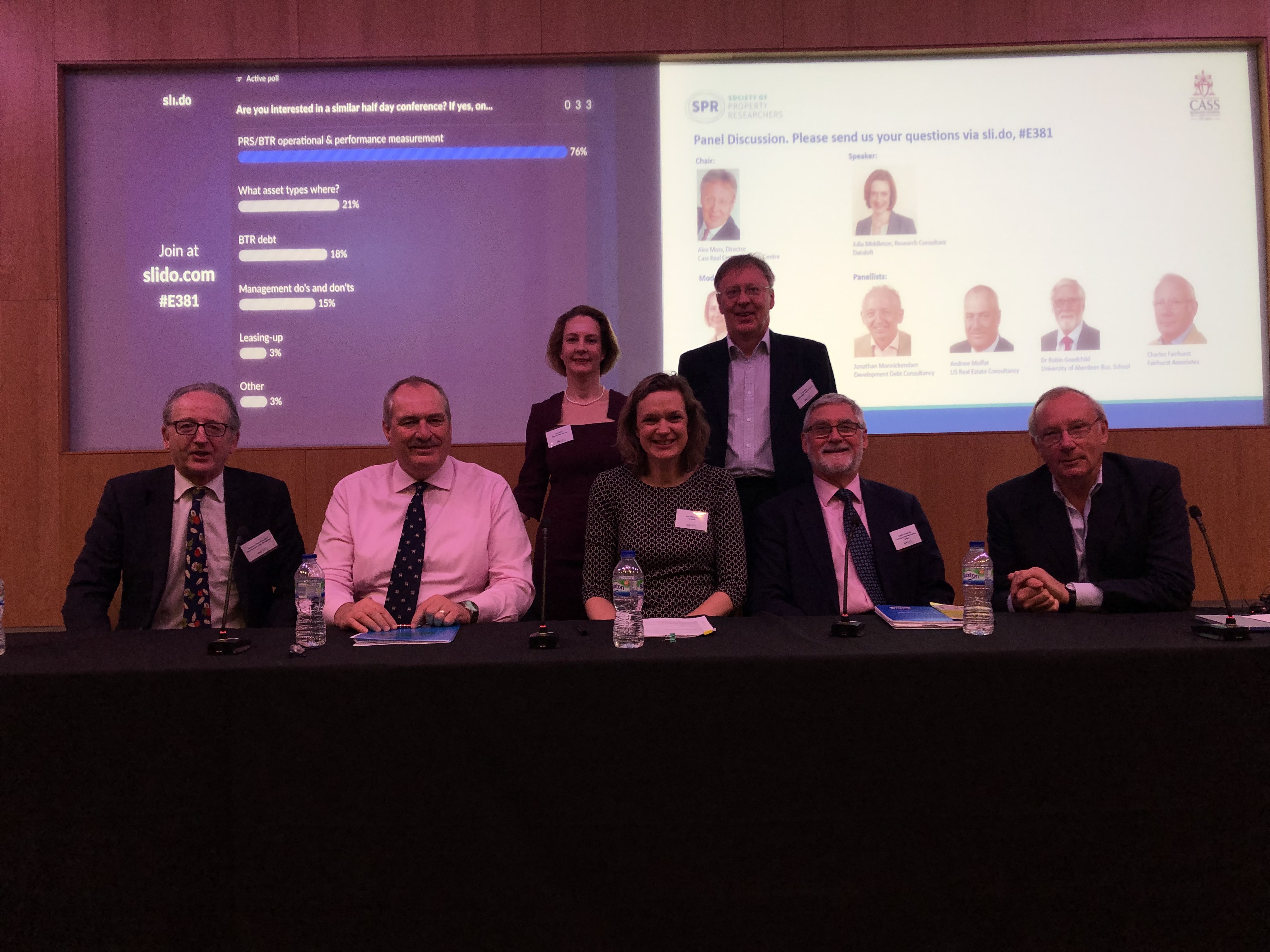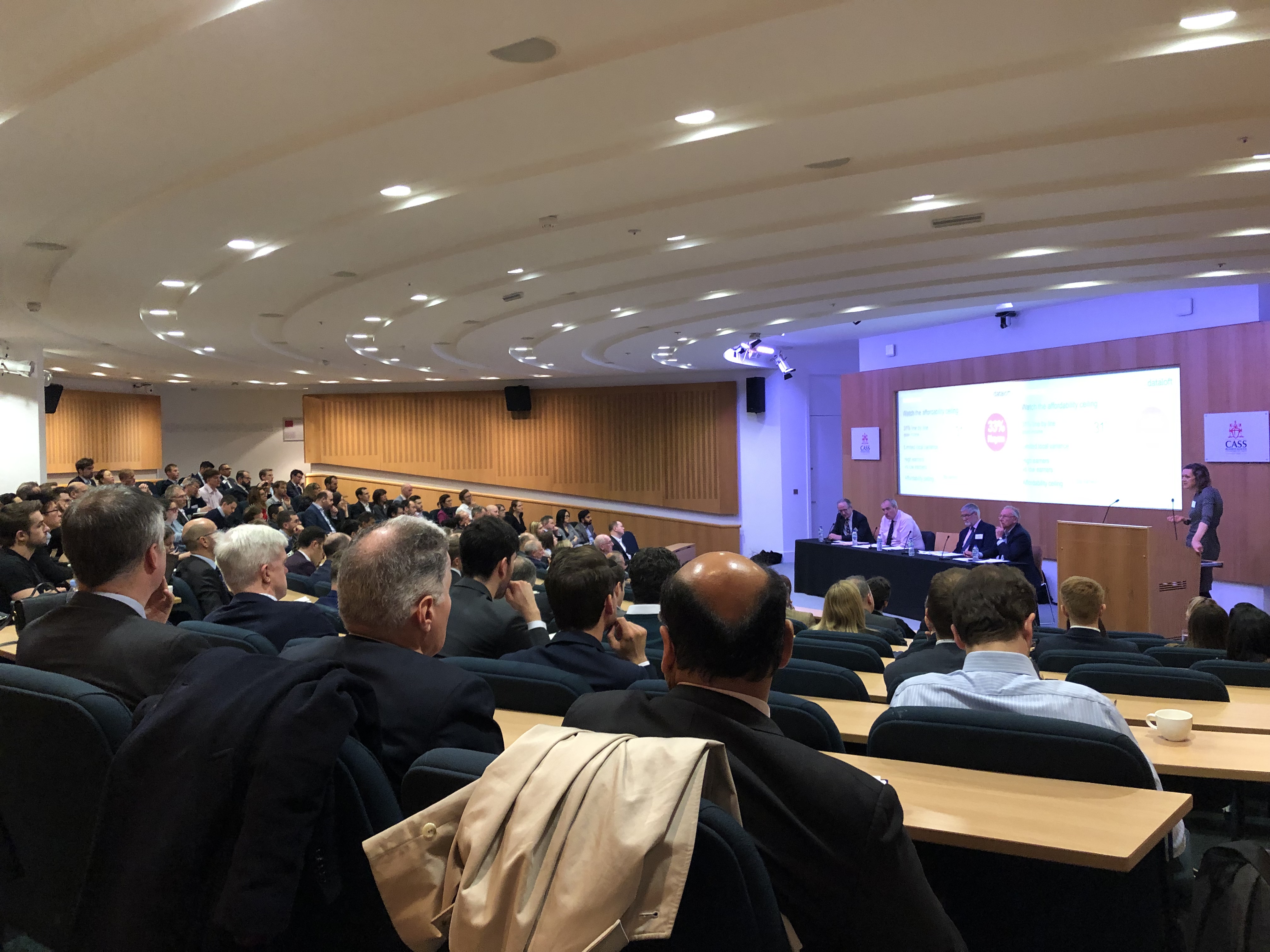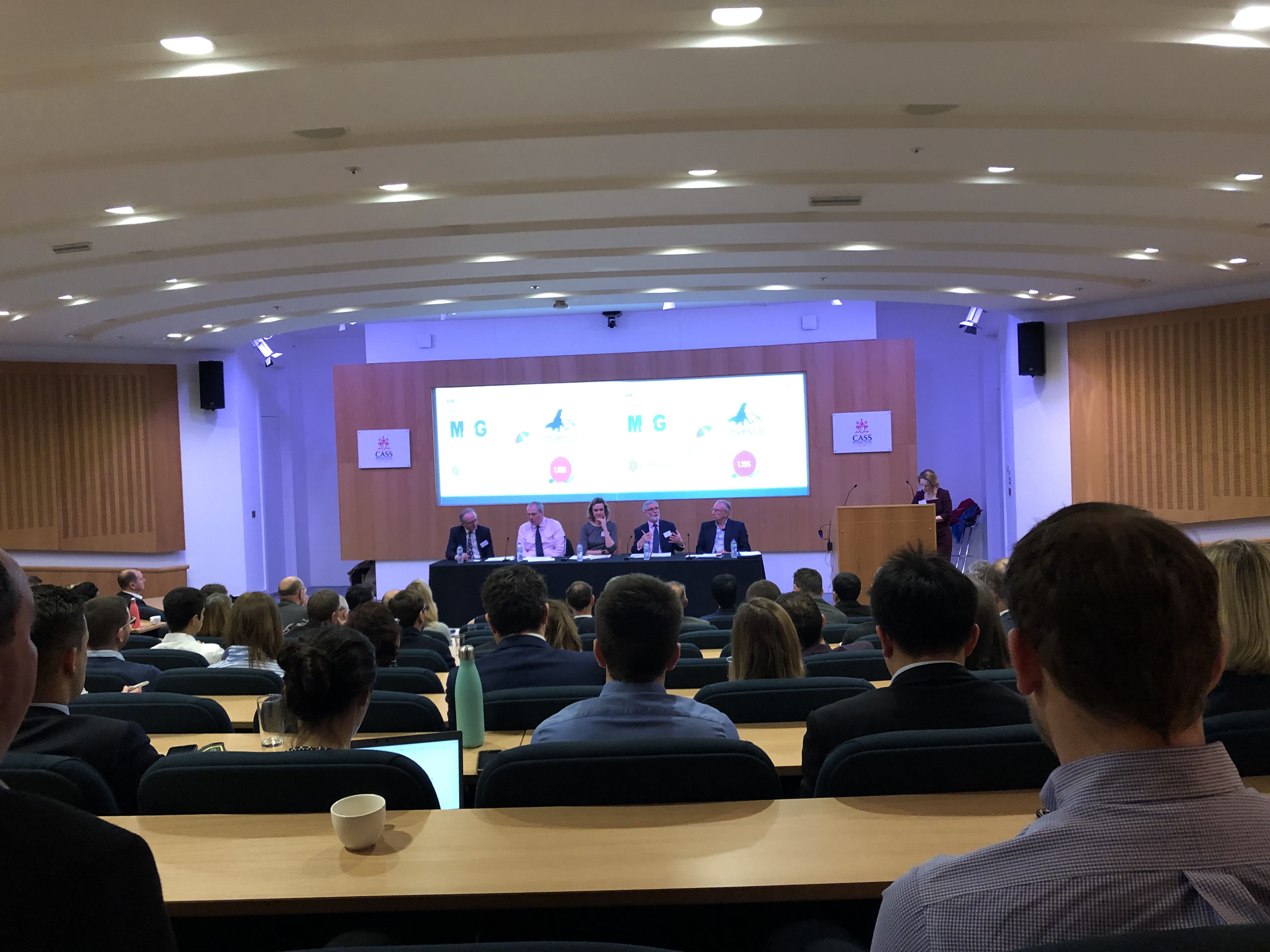From Build-to-Rent to Built-to-Rent: Assumptions to Reality
Tuesday 26 March 2019, Cass Business School, 106 Bunhill Row, London, EC1Y 8TZ
Where would you like to invest in the Build to Rent sector? That was the opening question for attendees at the Build to Rent seminar. The response indicated London as the favoured choice by a wide margin. This view was backed up by research detailed by Julia Middleton, whose work at Dataloft suggested that London and Reading were some of the cities with the best outlook for rental growth. However, she emphasised that affordability was key, with affordability in London already stretched for lower earners. She also highlighted that renting remains a very local business, with most tenants tending to remain in the same sub-markets, particularly in London, where 60% of moving renters remain within a five-mile radius.



Jonathan Monnickendam, Development Debt Consultancy, considered the rental market from a investor/ developer perspective, discussing early assumptions made in development appraisals. He suggested that important factors like the BTR rental premium and rental growth assumptions had been overstated, while the Gross to Net has likely been understated by the first wave of investors. He therefore questioned what the second wave of BTR would look like, asking whether the next set of developments would focus on the same type of product or whether it would no longer be feasible to create premium, city centre living when baking in new, more restrained assumptions.
Andrew Moffat, LIS Real Estate Consultancy, meanwhile suggested that a bottom-up approach was needed to make developments work and that investors needed to make management a much more integral part of the design process from day one. He echoed Julia’s comments by highlighting that investors needed to focus on the local markets, and local competition, and, while rental premiums may not always be easy to find, net rent can be improved by offering additional services and improving spec relative to the existing local offer.
A more top-down view was provided by Dr. Robin Goodchild, University of Aberdeen Business School, who commented that the BTR market was finally getting some traction, with the PRS having existed as an untapped opportunity since as early as the 1990s. He ran through the major players and early movers, noting M&G Real Estate and Invesco as being the largest and most active in the market to date. He also noted some of the challenges and lessons to be learned that investors needed to consider, such as rental seasonality, getting the right mix of units and how to exploit economies of scale in terms of management.
Charles Fairhurst, Fairhurst Associates, also considered the evolution of the market, turning back to the topic of who is investing and how. He demonstrated that a wide variety of investors were investing or looking to invest in BTR, across different kinds of platforms, with a wide variety of management partners. Indeed, he noted that there was only one player in the market that was considering a multi-channel approach, with experienced players only going through one investment channel, whether listed or unlisted, generally focusing on institutional investment.
Such a hot topic provided the scope for a wide variety of interesting questions from the audience, with discussion highlighting the importance of gaining tenant loyalty and considering local competition, as well as underlining that investors should not understate the level of competition that is offered by the mainstream PRS. Data proved a key concern, with the panel agreeing that BTR needed better data to aid development and understanding of the market and questioning how this could be achieved. Ultimately the discussion showed that there is still a lot to learn in an investment class that, while early stage and not without its difficulties, is clearly attracting and will continue to attract significant interest in the future.
Emma Grew